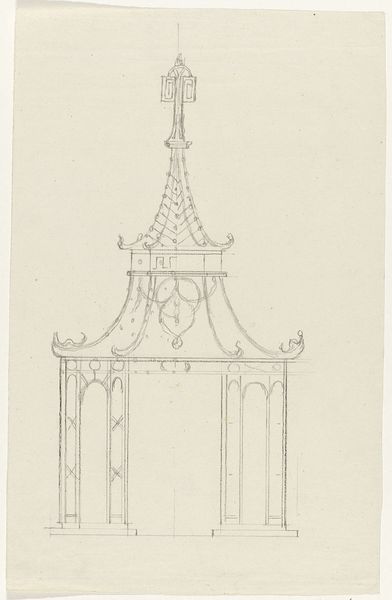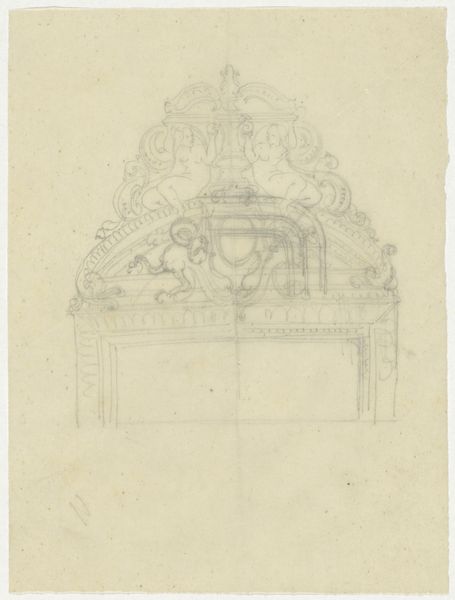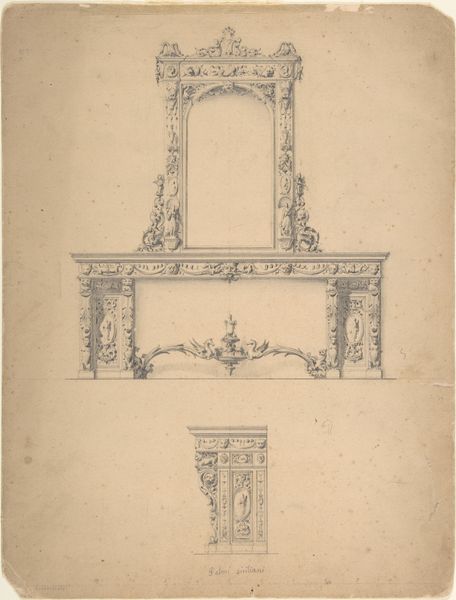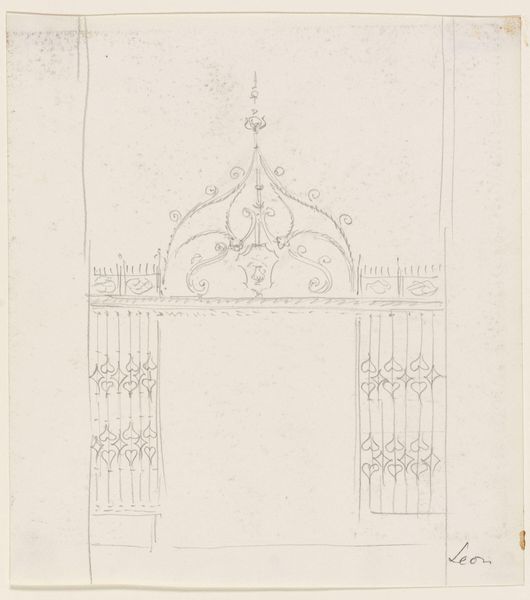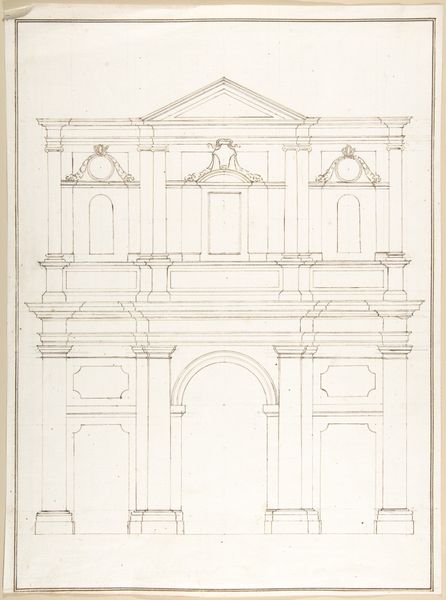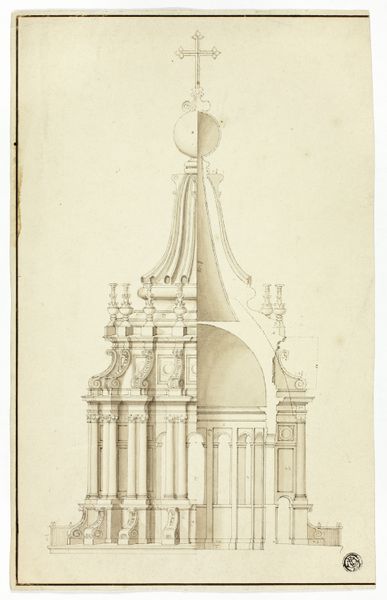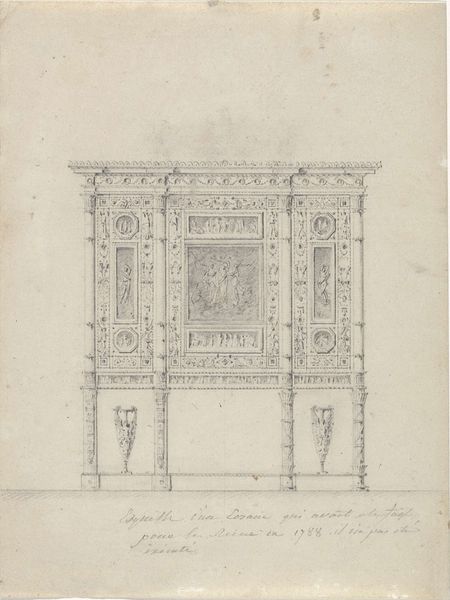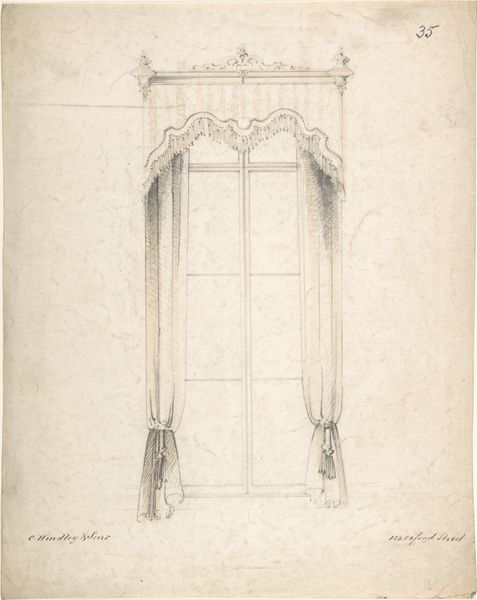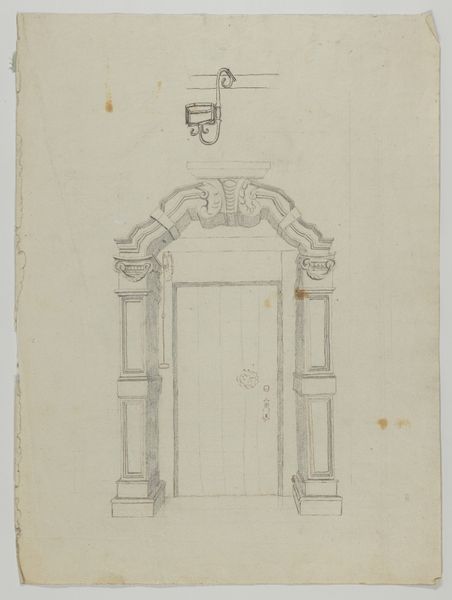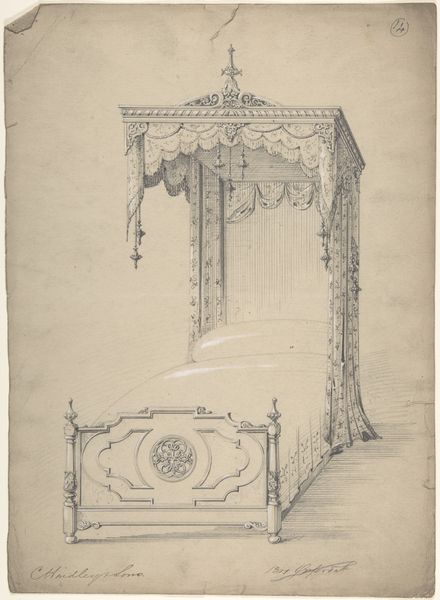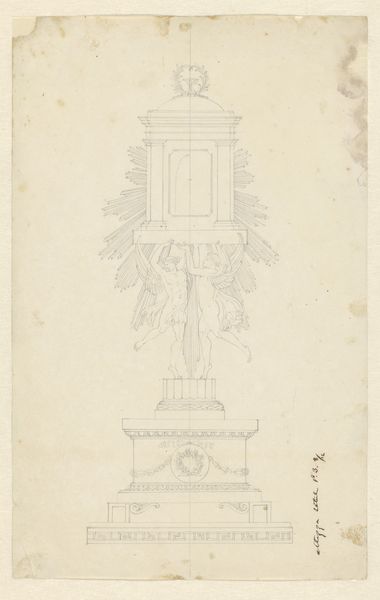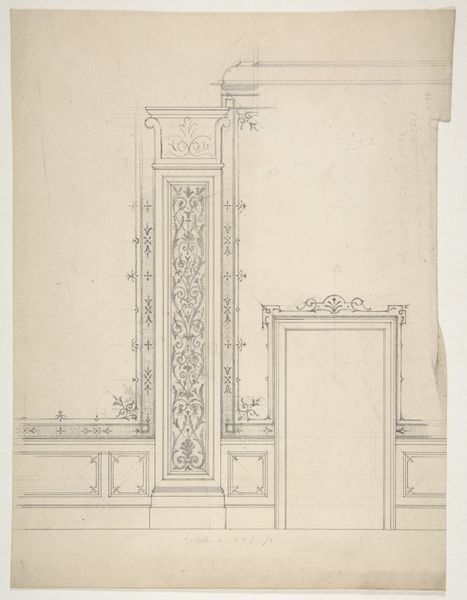
Dimensions: sheet: 14 7/16 x 10 1/4 in. (36.7 x 26.1 cm)
Copyright: Public Domain
Curator: Here we have “Design for a Gothic Bed” created sometime between 1841 and 1884, attributed to Charles Hindley and Sons. It’s currently held at the Metropolitan Museum of Art. Editor: Immediately, I'm struck by the crisp detail achieved in what seems like a relatively simple drawing. The texture of the draped canopy above the bed is so palpable. Curator: The choice to render it in mixed media – pencil, etching, and perhaps some wash on paper – really allows for a fascinating study of light and shadow. It pulls you in, doesn't it? The Gothic style, with its emphasis on verticality, arches, and ornamentation, often aimed to evoke a sense of awe. I wonder if the intended owner would sense those design aspects through this blueprint? Editor: Absolutely, and that speaks to a larger point about design drawings of the time. Were these ever truly meant as accessible guides? Look at the quality of this draftsmanship—the pencil work must be very exact for translating the drawing to the construction in three dimensions. Curator: Exactly. The "Gothic" label becomes interesting as well. It isn't exactly Medieval, is it? The image of the bed brings to mind how such styles can echo in the domestic sphere over generations of design work—what dreams, what sleep were to take place in such an ornately crafted zone? Editor: It almost speaks to the cultural capital embedded in the Arts and Crafts movement. A bed, after all, isn't just for sleeping; it's a symbol of domesticity and comfort, imbued with social meaning. Were such designs truly about promoting well-being or were they about making social distinctions? Curator: That's precisely where the design's visual language comes in. Gothic style in architecture had deep links to religion and power, and was frequently designed and interpreted according to complex traditions. Even something as personal as sleep becomes part of cultural theatre! Editor: And it highlights the paradox, perhaps even the contradictions of craft in this period: this object, conceived within a movement aimed at democratization, is, ultimately, a luxury object for the privileged few. Curator: This piece makes me ponder the symbols that are built into our daily experiences. How do these images accumulate cultural meanings and historical weight? Editor: I agree, and for me, this piece raises broader questions about materiality and production—who labored to create this dream object, and what social structures were at play in its realization?
Comments
No comments
Be the first to comment and join the conversation on the ultimate creative platform.
